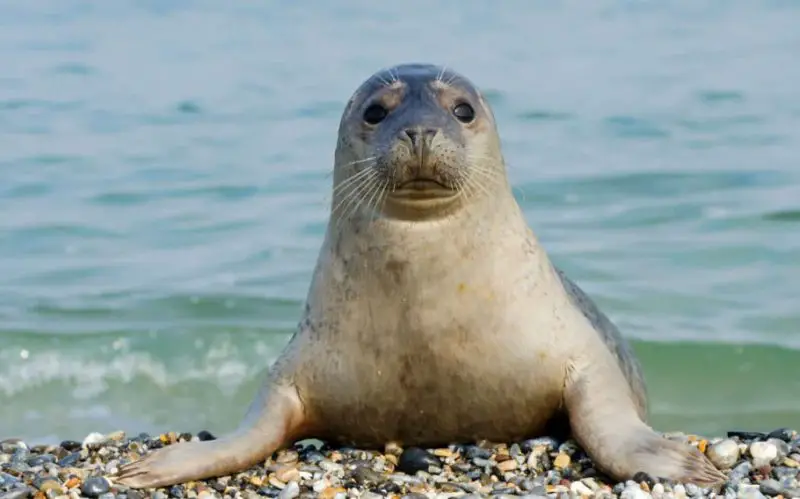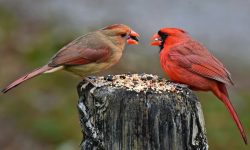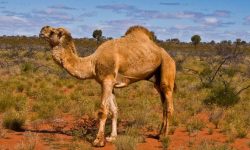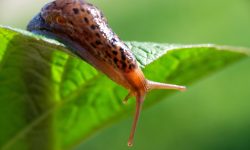Seals are agile, intelligent marine mammals that rely on a rich and varied diet to survive in some of the world’s coldest and most dynamic ocean environments. Their feeding habits reflect the diversity of the waters they inhabit, from deep coastal shelves to ice-filled seas. Understanding what seals eat provides insight into how they maintain their thick blubber, strong muscles and high energy levels needed for swimming, diving and avoiding predators.
Although different species of seals have distinct feeding preferences, most are opportunistic hunters that take advantage of whatever prey is most abundant in their habitat. They hunt using a combination of speed, stealth and sensitive whiskers that detect vibrations in the water. Some seals specialize in fish, while others rely heavily on crustaceans or squid. Their diet shifts throughout the year depending on seasonal migrations, breeding cycles and prey availability.
This guide explores 20 foods seals hunt in the wild, highlighting the prey that sustains these remarkable animals across oceans and ice-covered regions. Their feeding behavior reveals how finely tuned seals are to their marine environments and how essential their diet is to long-term survival.
Understanding the Seal Diet

Seals are carnivorous marine mammals whose diet revolves around fish, squid, crustaceans and other ocean animals. Their razor-sharp teeth and powerful jaws help them grasp slippery prey, while most species swallow their food whole rather than chewing. Seals must consume a significant amount of energy-dense prey every day to maintain body heat in cold waters, especially during breeding or molting seasons.
Their diet varies by species. Harbor seals have a broad diet filled with local fish and invertebrates. Leopard seals are top predators that hunt penguins and sometimes other seals. Crabeater seals focus heavily on krill, using specialized teeth that filter small crustaceans from seawater. This variety reflects how seals have adapted to their unique ecological niches.
Seals also rely on their diving abilities to access prey others cannot. Some species dive hundreds of meters deep, pursuing fish that rise toward the surface at night. Their flexible diets combined with remarkable hunting skills make seals vital parts of marine ecosystems and key indicators of ocean health.
20 Foods Seals Hunt in the Wild
1. Herring
Herring are a staple food for many seal species. These fast-moving fish form dense schools that seals can chase and capture in bursts of speed. Their high fat content provides the energy seals need in cold waters.
Seals often hunt herring near coastal areas where the fish gather seasonally. They rely on teamwork or solo chases depending on the species and the size of the fish schools. Herring migrations influence seal movement patterns throughout the year.
Because herring are abundant, they support large seal populations and are crucial to many marine ecosystems.
2. Anchovies
Anchovies are small, nutrient-rich fish that seals can swallow whole. Their oily flesh contains valuable fats that help seals maintain body temperature. Anchovy schools are dense, making them ideal hunting opportunities.
Seals use quick lunges to capture anchovies, taking advantage of their tight group formations. They often follow anchovy migrations to coastal feeding grounds.
These fish help sustain seals during critical life stages such as molting or breeding.
3. Sardines
Sardines are another high-energy fish that seals chase aggressively. Their predictable seasonal migrations make them a consistent prey source. Sardines thrive in nutrient-rich waters, drawing seals into bays and upwelling zones.
Seals use coordinated movements to isolate sardines from schools. Their agility allows them to target individuals with precision. Sardines’ fatty composition is ideal for building the thick blubber seals rely on.
Because sardines move in large groups, seals can consume multiple fish in a single dive.
4. Cod
Cod are larger fish that provide substantial nutrition per catch. Seals pursue them in deeper waters, often diving to impressive depths. Cod are slower swimmers than schooling fish, making them easier for seals to overpower.
Their dense flesh offers high protein that supports muscle development. Cod-rich regions often become seasonal feeding hotspots for seals.
Seals living near colder northern waters rely heavily on cod throughout the year.
5. Pollock
Pollock are abundant in northern oceans and serve as a key food source for many seal populations. They swim in large schools, making them easy to locate through whisker-based vibration detection.
Seals often dive deep to catch pollock, sometimes working as a group to herd them upward. These fish provide both protein and fat that help seals stay active in frigid environments.
Pollock availability influences seal distribution in the North Pacific.
6. Salmon
Salmon are strong swimmers and powerful prey, but seals often target them in shallow waters or near river mouths during spawning runs. Their high fat content makes them exceptionally valuable meals.
Seals sometimes wait near estuaries where salmon gather, ambushing them as they pass. This behavior can create dramatic interactions between seals and migrating fish.
Salmon offer nutrient-dense energy that seals use to fuel long migrations.
7. Mackerel
Mackerel are fast, oily fish that seals pursue with swift, agile swimming. Their tightly packed schools allow seals to capture multiple fish in a single chase.
Rich in omega-3 fats, mackerel support the metabolic needs of seals and help maintain healthy blubber layers. They are particularly important during winter months when energy demands increase.
Mackerel migrations provide seals with reliable feeding opportunities.
8. Squid
Squid are a favorite prey for deep-diving seal species. Their soft bodies are easy to swallow, and their abundance in mid-water regions makes them accessible during nighttime feeding dives.
Seals use precise movements to capture squid, which often change direction rapidly. The high protein content of squid supports growth and muscle health.
Squid availability varies seasonally, influencing where seals travel.
9. Octopus
Octopus are intelligent and strong, but seals are skilled enough to capture them. Seals rely on rapid lunges and firm bites to prevent escape. Octopus meat is rich in nutrients and provides long-lasting energy.
These cephalopods are more common in rocky coastal habitats, where seals search crevices and tide pools for hidden prey. Seal pups learn to hunt octopus from older individuals.
Octopus hunts highlight seals’ adaptability and problem-solving abilities.
10. Krill
Krill are small shrimp-like crustaceans that dominate the diet of certain seal species, particularly crabeater seals. These seals use specialized teeth to filter krill from large volumes of water.
Krill provide essential fats and proteins. Their abundance in Antarctic waters sustains massive seal populations through harsh winters.
Krill availability is tied closely to sea ice conditions, affecting seal feeding patterns.
11. Shrimp
Shrimp are quick and abundant prey that seals catch near the seafloor or in schools. Their mild flavor and high nutrient content make shrimp valuable, especially for younger seals.
Seals detect shrimp through movement and light reflection. They may scoop them from sandy bottoms or chase them through kelp forests.
Shrimp help diversify the seal diet and supply consistent protein sources.
12. Crabs
Crabs offer a tough but rewarding meal. Seals crack open crab shells using powerful jaws and sharp teeth. They typically target smaller or softer-shelled species.
Crabs live in rocky or sandy coastal zones where seals forage during low tide. They provide minerals and slow-digesting protein that benefits seals over time.
Because crabs are abundant in shallow waters, seals often incorporate them into regular feeding cycles.
13. Lobsters (Small or Juvenile)
Juvenile lobsters are occasional prey for seals living near reefs and rocky coastlines. Their hard shells require strong bites, but seals easily consume the soft meat once cracked open.
Seals find juvenile lobsters under rocks or in crevices. Their rich nutrient profile makes them a high-value catch.
Lobsters are not primary prey but add variety to a seal’s diet.
14. Eels
Eels are slippery and agile, but seals catch them using fast body twists and strong grip. Their long shape makes them easy to swallow whole.
Eels live in muddy or rocky environments that seals frequently explore. They offer high fat content and sustained energy.
Eel-rich habitats attract seals during certain seasons for opportunistic feeding.
15. Flatfish
Flatfish like flounder and halibut rest on sandy seafloors, providing easy targets for seals that hunt by touch. Their slow movement allows seals to capture them with minimal effort.
These fish offer both protein and valuable fats. Seals often dig into sand using their snouts to uncover hidden flatfish.
Flatfish are especially important in cold northern waters.
16. Lanternfish
Lanternfish live in deep ocean layers and migrate upward at night. Deep-diving seal species pursue them during these nighttime ascents.
Lanternfish contain high levels of fat and are incredibly abundant, making them a major food source for many marine predators.
Their predictable vertical migration patterns help seals find them efficiently.
17. Penguins (Leopard Seals)
Leopard seals are apex predators that actively hunt penguins. They use powerful jaws and ambush tactics near ice edges where penguins enter and exit the water.
Penguins provide large, nutrient-dense meals that sustain leopard seals for long periods. Their thick fat layers offer exceptionally high caloric value.
This specialized predation highlights the diversity of feeding habits across different seal species.
18. Small Fish Fry
Young fish provide easy and abundant prey for seals, especially pups still learning to hunt. Fish fry gather near shorelines and kelp beds where seals patrol.
Seals scoop them up in large numbers, taking advantage of schooling behavior. Their soft bodies and high moisture content make them ideal beginner prey.
This early feeding helps young seals develop hunting skills.
19. Sea Snails
Sea snails are consumed when other prey becomes limited. Seals crush the shells to access nutrient-rich soft tissue. Snails are especially common in tide pools and rocky shores.
These mollusks provide minerals and slow-digesting nutrients that carry seals through periods of low fish activity.
Snails are not a primary food source but remain valuable when available.
20. Carrion
Seals sometimes feed on fish or marine animals that have already died. Scavenging helps them conserve energy, especially during harsh winters or after storms.
Carrion includes dead fish, squid or whale carcasses. Seals approach these opportunities cautiously but take advantage of the free calories.
This opportunistic feeding behavior plays a role in recycling nutrients within marine ecosystems.
FAQs About What Do Seals Eat
What do seals eat the most?
Most seals rely heavily on fish and squid.
Do seals eat penguins?
Only certain species like leopard seals.
Do seals chew their food?
Not usually—they swallow prey whole.
How much do seals eat per day?
Several kilograms depending on species and size.
Do seals eat crustaceans?
Yes. Shrimp, krill and crabs are common foods.
Are seals picky eaters?
No. They eat whatever prey is abundant.
Do seals drink seawater?
They get hydration mainly from prey.
Do baby seals eat the same foods?
They start with milk and transition to fish.
Do seals hunt alone?
Most species hunt individually.
Can seals eat large prey?
Yes. Some species can tackle birds or young seals.
Final Thoughts
Seals are versatile marine predators with diets shaped by the dynamic environments they inhabit. By understanding what seals eat, we gain insight into their hunting strategies, ecological importance and the complex relationships they share with ocean ecosystems. Their ability to adapt to shifting prey availability—whether chasing fast fish, diving for squid or filtering krill—demonstrates the remarkable resilience that has allowed seals to thrive across the world’s oceans. Protecting the waters they depend on ensures that seals continue to play their essential role in marine life.






